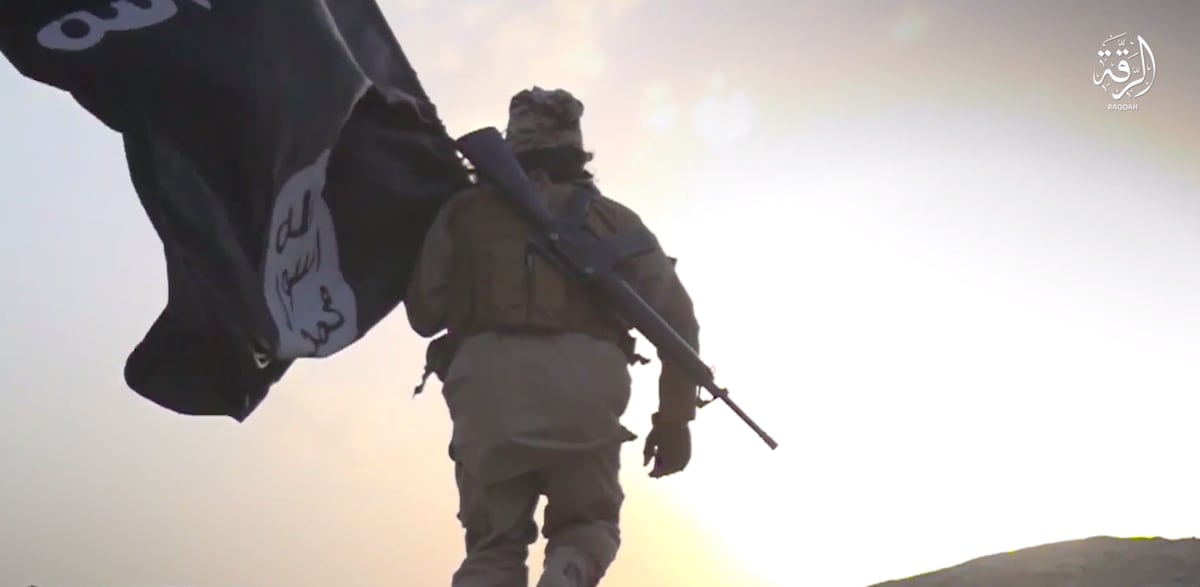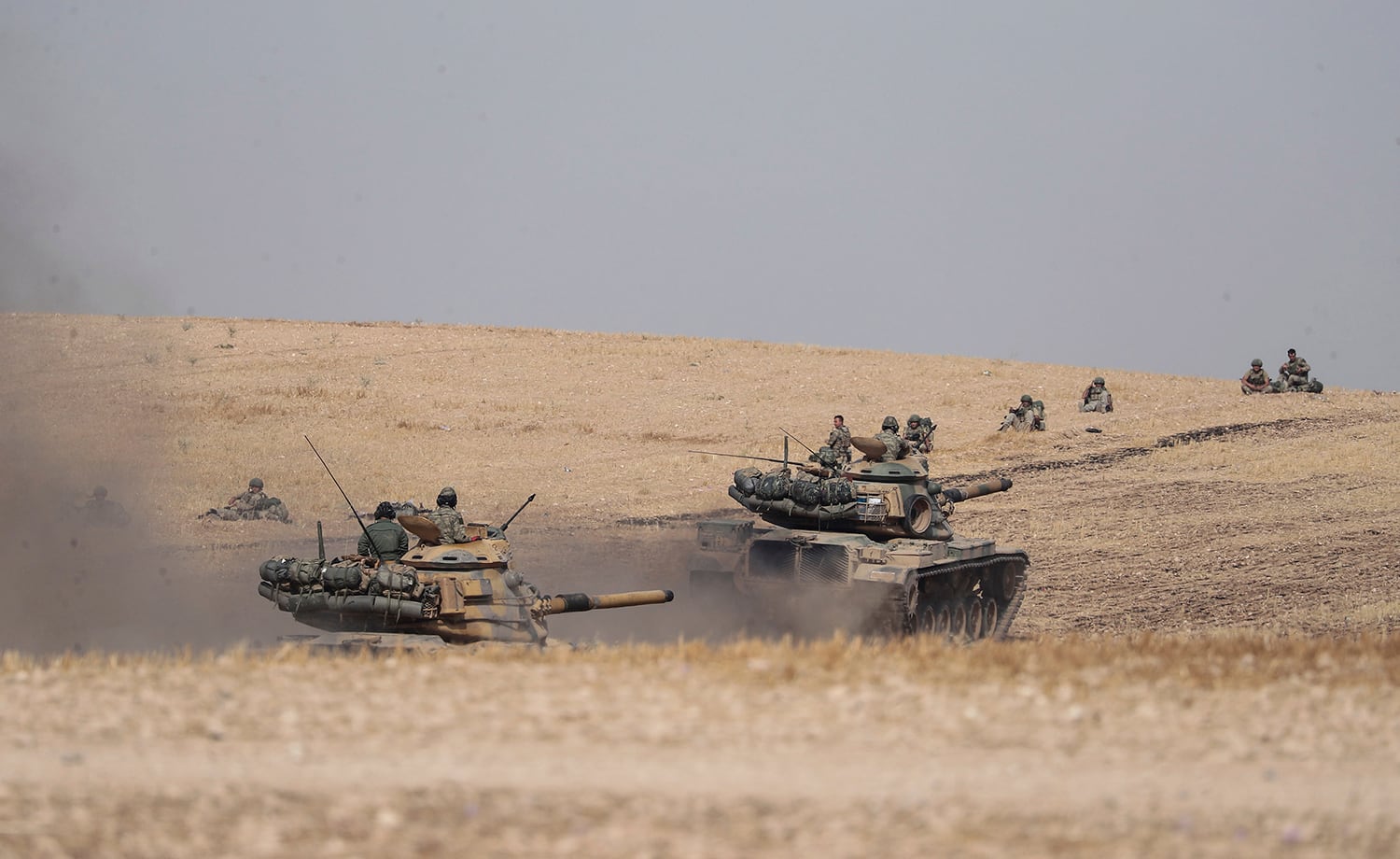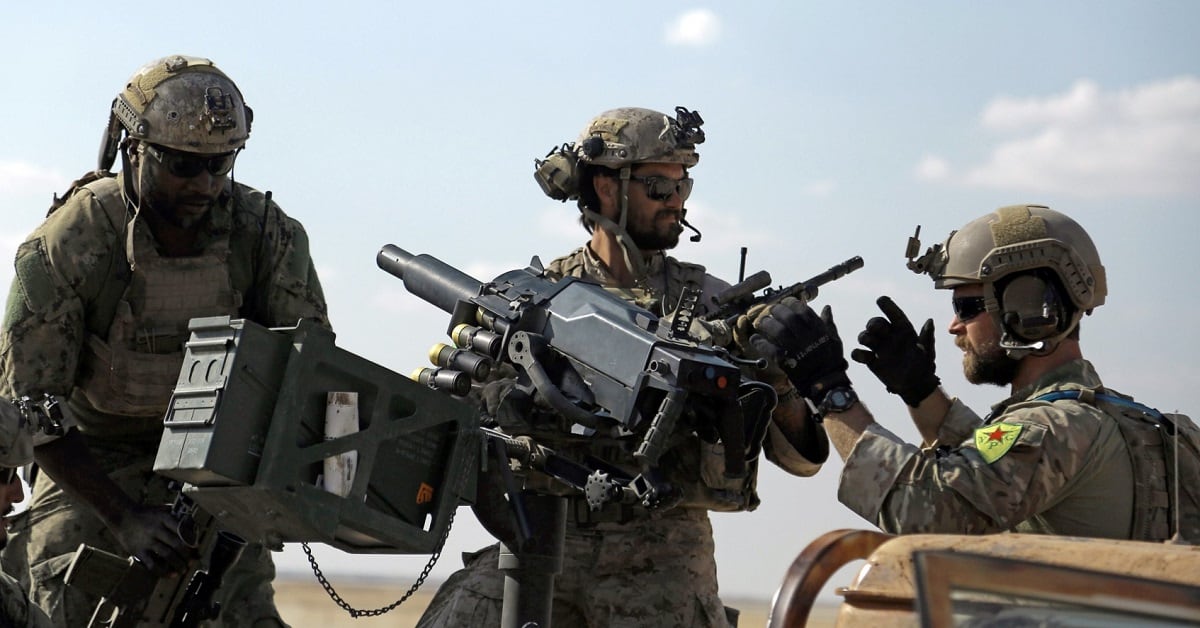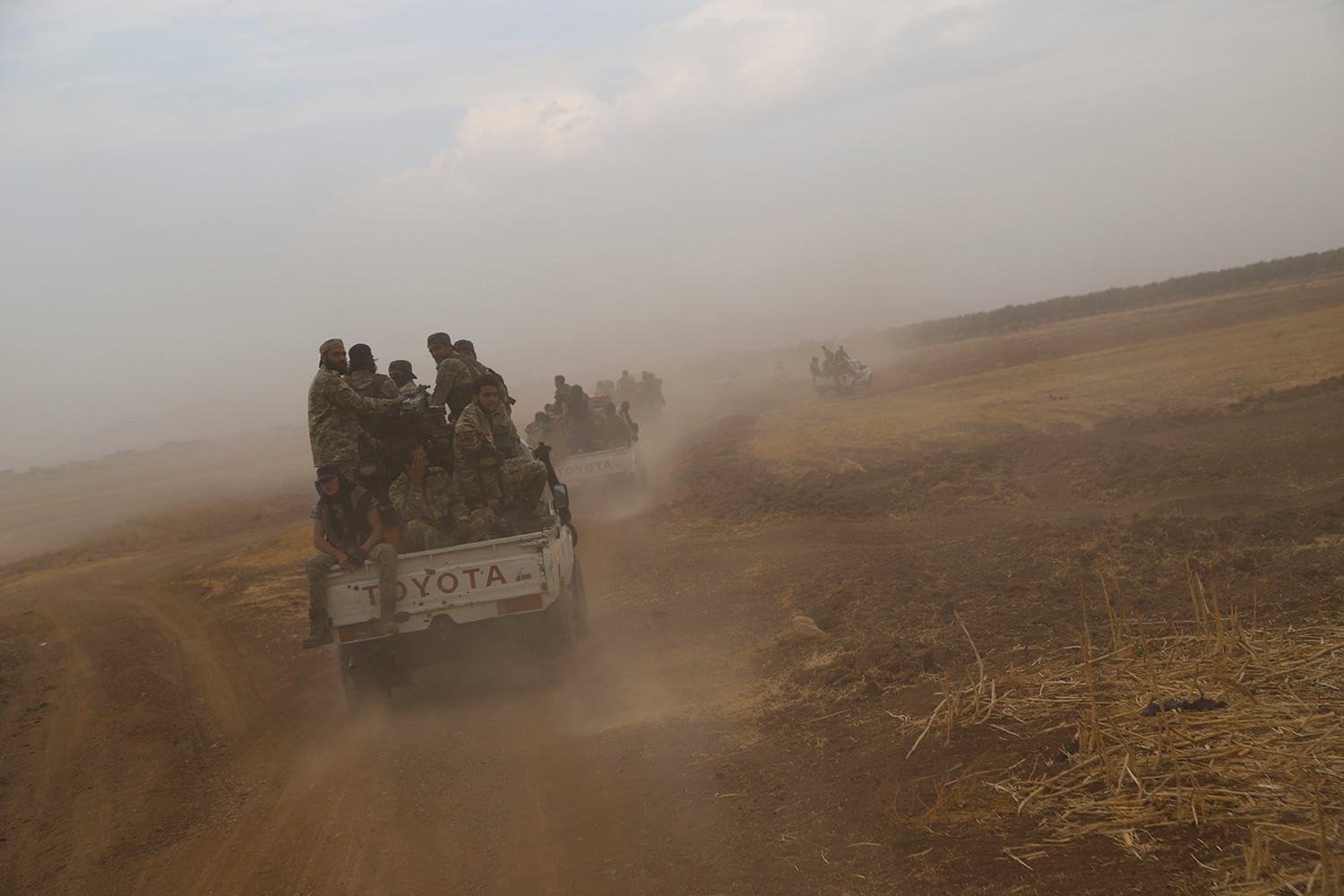The rapid withdrawal of American troops from Syria is stoking the concerns of Congress and former U.S. defense officials who warn the limited American presence and abandonment of an ally will stymie intelligence collection efforts.
Human intelligence networks driven by U.S.-backed Syrian Democratic Forces may all but collapse following President Donald Trump’s decision to withdraw U.S. forces from Syria ahead of a Turkish assault to drive out the Kurdish-led militia.
And limited troop presence in the war torn region coupled with a congested airspace over northern Syria could hamper U.S. air collection assets and loitering surveillance times over suspected ISIS targets.
U.S. ISR assets are still operating over the skies of northeastern Syria, according to a senior U.S. defense official.
The precipitous drop in intelligence threatens a comeback of ISIS and other nefarious militant groups in the region as it did when the U.S. withdrew troops in Iraq and Afghanistan, a former U.S. defense official who worked on Afghanistan issues, told Military Times.
“Insurgencies are very much like mushrooms in that regard, they grow and proliferate in darkness,” said the former U.S. official, who spoke to Military Times on condition of anonymity.
America’s withdrawal from Syria “would leave a black hole and whatever information we gathered before would be lost in the future or more difficult to find,” a former U.S. military intelligence official who supported special operations forces told Military Times.
Turkey was kicked off the U.S-led coalition’s air tasking as it launched military operations in northern Syria. Pentagon officials have yet to respond to a media query from Military Times regarding whether the U.S. and Turkey are still coordinating safe flight over the war-torn country.
RELATED

Ranking Senate Armed Services Committee member Sen. Jack Reed, D-R.I., told reporters Thursday, "we have to be able to maintain overflight, we have to be able to strike, and it’s more complicated now because I don’t think we can assume we have the same access or overhead coverage that we had.”
“I assume our human intelligence network was pretty well decimated now that we’ve given up the best sources of information with our relationship with the Kurds. I don’t know what the Iraqis will do in allowing us to operate from the region ― so we are in the process now of, on the run, trying to come up with another strategy to deter and continue to defeat ISIS,” Reed said.
Jennifer Cafarella, the research director for Institute for the Study of War, warns that ISIS is already resurgent in areas around Iraq and Syria. And America’s withdrawal will limit drone intelligence collection efforts.

“ISIS will resurge and we’ll be blind,” Cafarella said. But she said ISIS’ comeback will likely start in Iraq, not Syria.
“They have an opportunity now to destabilize Iraq and possibly compel another American withdrawal,” she told Military Times. She explained there have already been multiple thwarted attacks in the Iraqi city of Karbala and the Babil Governorate.
Disputed territorial claims between the Iraqi government and the Kurds in places like Kirkuk are also vulnerable to ISIS’ resurgence, Cafarella said.
In Syria, ISIS is taking advantage of the upheaval created created by Turkey’s long-planned offensive as fighters holed up in Kurdish make-shift prisons escape. Hundreds of ISIS fighters have already escaped as fighting rages between America’s combative allies in northeastern Syria.
Cafarella said she’s seeing major ISIS activity in central Syria against pro-regime forces and “the slow but steady expansion of support zones in SDF areas.”
The SDF have been forced to shift fighters to confront the Turkish invasion while pulling attention away from guarding ISIS camps and conducting counterterrorism operations against ISIS sleeper cells.
RELATED

“Technical intel can fill some of the information gaps, but networks on the ground need to compliment that in order to get a full information picture,” said the former U.S. defense official who worked on Afghanistan issues.
An August DoD inspector general’s report criticized the drawdown in Syria that was underway before Trump’s decision to vacate northern Syria entirely, citing that it would hamper the SDF’s ability to build intelligence collection capabilities.
“The partial drawdown had occurred at a time when these fighters need additional training and equipping to build trust with local communities and to develop the human-based intelligence necessary to confront ISIS resurgent cells and insurgent capabilities in Syria,” the report reads.
"Whenever the US leaves an area abruptly —Iraq 2011, for example — intelligence collection suffers. What’s happening in Syria is no different, another former U.S. defense official told Military Times.
On Thursday U.S. Vice President Mike Pence announced a five-day cease fire in northern Syria following talks with Turkish President Recep Tayyip Erdogan in Ankara.
Analysts were quick to note that the agreement merely solidified Turkey’s objectives in northern Syria while calling on the Kurd’s to capitulate and cede territory to the Turks and their militia forces.
Secretary of Defense Mark Esper told reporters Friday that upon completion of the withdrawal of Kurdish YPG forces from the 20 mile “safe zone” on its border “Turkey has committed to enacting a permanent cease fire.”
Esper said he called Turkish Minister of Defence Hulusi Akar on Friday and “reiterated the United States’ position that Turkey must adhere to the full terms of this agreement.”
SDF forces claimed Friday that Turkey is already violating the agreement.
“Despite the agreement to halt the fighting, air and artillery attacks continue to target the positions of fighters, civilian settlements and the hospital in Serêkaniyê/Ras al-Ayn. Turkey is violating the ceasefire agreement by continuing to attack the town since last night,” Mustafa Bali, the SDF spokesman tweeted Friday.
A cessation of hostilities in northern Syria could allow for more collection assets in the sky and allow SDF fighters to regroup and return to defeat ISIS operations, but reports indicate Turkey is still pressing its attack. And U.S. forces would still have to contend with the reduced footprint in Syria, which could dampen efforts to collect intelligence.
A senior U.S. defense officials told reporters Tuesday that U.S. forces would continue the defeat ISIS mission from Iraq.
U.S. troops are still continuing a “deliberate withdrawal” from northeastern Syria and force protection for those forces is a top priority, Esper said.
On Thursday, Turkey’s Ministry of Defense said it had killed 702 YPG and PKK members. Turkey launched operations Oct. 9 in northern Syria to rout YPG and SDF fighters Turkey claims are an armed wing of the designated terrorist group the Kurdistan Workers’ Party or PKK.
Defense News reporter Joe Gould contributed to this story.
Shawn Snow is the senior reporter for Marine Corps Times and a Marine Corps veteran.





